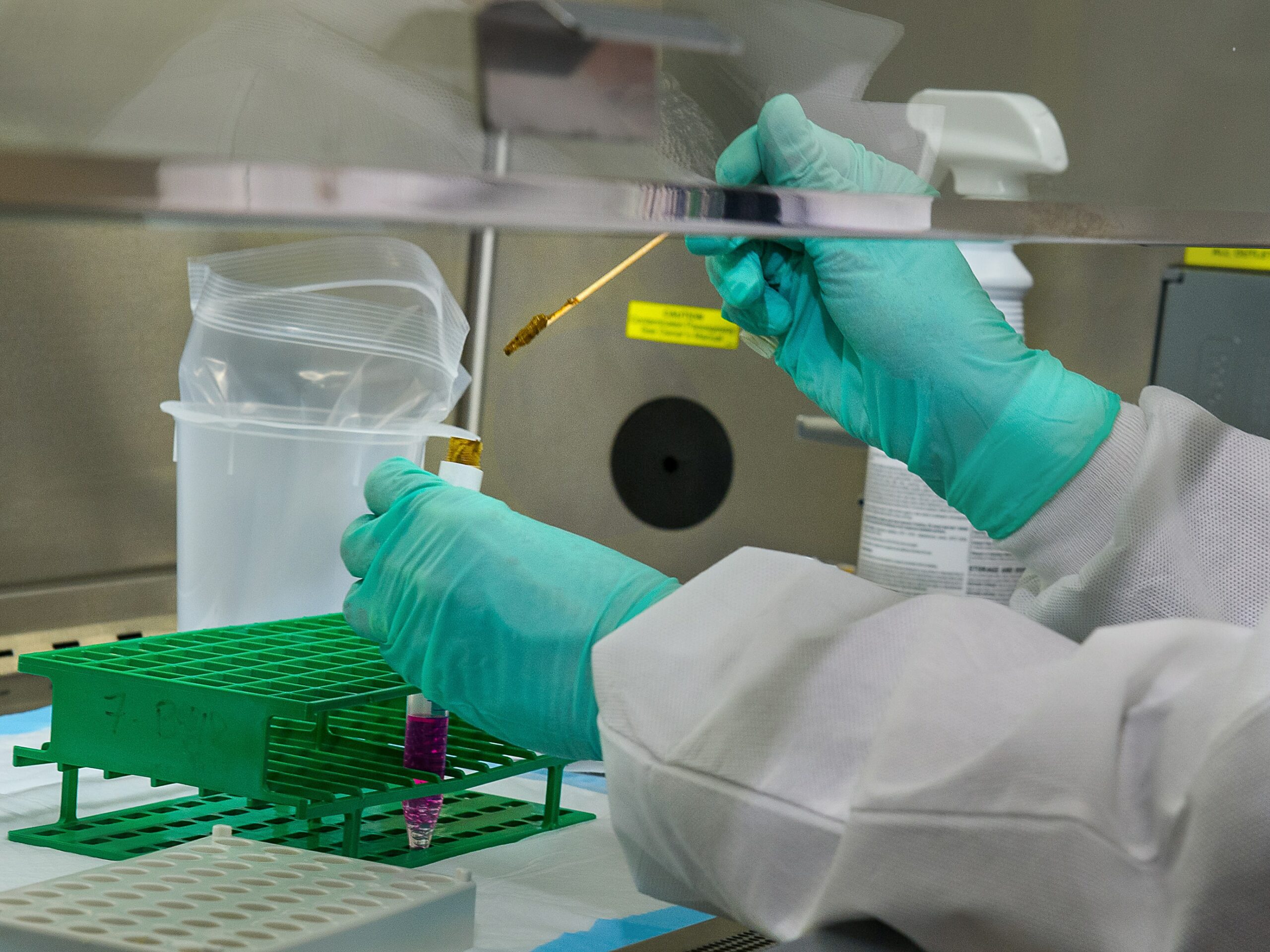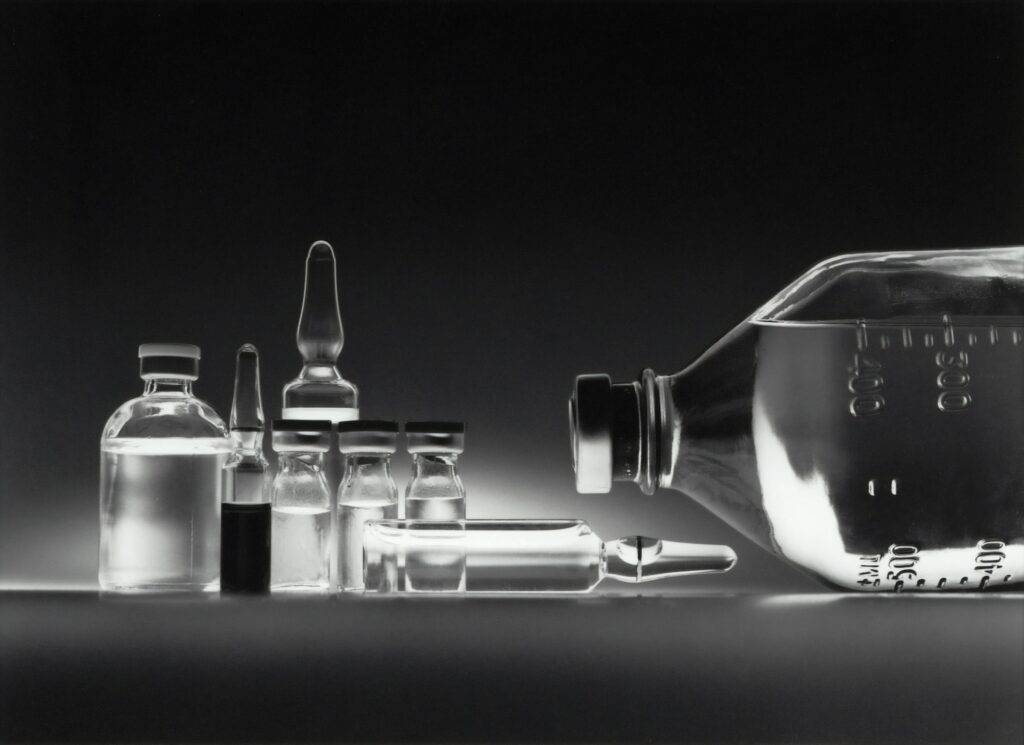02/06/2023 | Industrial Wastewater | 8 MINUTE READ
Uses and Industrial Applications of Hydrofluoric Acid

There is a wide range of different chemicals that are routinely used in industrial settings, one of which is hydrofluoric acid. This is a type of chemical compound that consists of fluorine and can come in several different forms. Along with being dissolved in water, hydrogen fluoride can also exist as a fuming liquid or colorless gas.
Hydrofluoric acid is used to make everything from refrigerants and herbicides to aluminum and electrical components. When you’re attempting to measure a hydrofluoric acid solution to determine the exact concentration of the chemical, obtaining a pH measurement can be challenging. This type of acid is regularly used in processes that etch glass, which means that traditional glass pH electrodes will be destroyed in the measurement process.
The concentration of hydrofluoric acid is directly affected by the pH readings. If pH levels are high, most of the fluoride ions will exist as a type of non-corrosive free fluoride. When pH levels are low, the free fluoride will be converted to hydrogen fluoride, which results in a more corrosive solution that’s difficult to measure.
By keeping pH levels high, you’ll be able to extend the life of your pH measurement electrode. You could also select a pH sensor that’s resistant to this type of acid. This guide takes a closer look at the many industrial uses and applications of hydrofluoric acid.

What is Hydrofluoric Acid?
Hydrofluoric acid is an aqueous form of hydrogen fluoride. It’s considered to be a corrosive and colorless acid that can be dangerous when it comes into contact with skin, eyes, or lungs. Despite these dangers, the natural reactivity of this acid makes it highly effective when used for industrial applications.
The reason that this acid is extremely corrosive is because of the reactivity of the fluorine ion. Despite this characteristic, hydrofluoric acid is a relatively weak acid since it doesn’t completely dissociate into water.
How Hydrofluoric Acid Works
Hydrogen fluoride mixes with water to form hydrofluoric acid. However, hydrogen fluoride and hydrofluoric acid are considered to be the same chemical. This chemical is regularly used in the processing, refining, and extraction of oil, metals, rock, and brick in industrial settings. It’s also an intermediate for numerous chemical reactions.
You can use hydrofluoric acid to get rid of rust and to polish or etch glass. This chemical is also added to commercial rust removers, automotive cleaners, and water spot removers. When used in welding and manufacturing processes, the acid is often released into the environment. It has a potent odor that can be irritating. However, the odor isn’t always strong, which means that you can’t depend on it as a warning of exposure. Even though this acid is considered to be weak, it’s dangerous to human health because of how it can penetrate tissue.
Chemical Properties
As mentioned previously, hydrofluoric acid is a solution of hydrogen fluoride when it’s present in water. It comes with a molar mass that amounts to just over 20 g/mol. The molecular density of this acid is 1.15 g/mL. This acid also has a pH of right around three.
Where is Hydrofluoric Acid Found?
Hydrogen fluoride is typically found in refrigerants. Around 60% of hydrogen fluoride that’s used in manufacturing applications is applied in the production of refrigerants. This acid can also be found in:
- Herbicides
- High-octane gasoline
- Plastics
- Aluminum
- Fluorescent light bulbs
- Electrical components

How to Measure the pH of Hydrofluoric Acid
You can measure the pH of hydrofluoric acid with a pH sensor. However, it’s essential that you use the right pH sensor for the job. Acidic fluoride solutions are highly corrosive and can cause the glass membrane in most pH sensors to dissolve. The exact rate of corrosion depends on the concentration of fluoride as well as the temperature and pH of the solution. If you need to measure the pH of hydrofluoric acid, make sure that you obtain a pH sensor that comes with glass that’s designed to be resistant to this acid.
How Hydrofluoric Acid is Typically Used
There are many applications that hydrofluoric acid can be used in, which include:
- Metal and glass etching – Hydrofluoric acid molecules are able to disrupt silicon-oxygen bonds in glass, which allows for the material to effectively break down. Metals can also be dissolved with this acid. The only exception is nickel.
- Creating fluorocarbons – These chemical compounds are routinely used in refrigerants and aerosol sprays.
- Industrial applications – You can prepare electronic surfaces for silicon fabrication with hydrofluoric acid.
- Manufacturing products – Hydrofluoric acid is regularly used in such household items as plastic and light bulbs.
What are the Industrial Applications of Hydrofluoric Acid?
While hydrofluoric acid is highly corrosive, some of the properties that it consists of make it beneficial for industrial applications, which include everything from glass manufacturing to pharmaceuticals.

Glass Manufacturing
The primary raw materials that are used when manufacturing every type of glass include sodium carbonate and silica sand. Lead oxide can also be used when producing crystal glass. The last phase of the manufacturing process involves passing glass through a bath that consists of a mixture of sulfuric acid and hydrofluoric acid. These are the only acids that can properly dissolve silica in an efficient time.
This last acid treatment ensures that the crystal glass obtains the sparkling finish that it’s known for. Hydrofluoric acid provides the glass surface with smooth and transparent impressions. If the gaseous form of this acid was applied to glass, it would cause the surface to become irregular and opaque since a bond would form between the silicon molecules and the fluoride anions.
Pharmaceuticals
Hydrofluoric acid is also used within the pharmaceutical industry. This acid is the precursor to nearly every type of fluoride compound, which includes the antidepressant medication known as Fluoxetine (Prozac). Companies typically use hydrofluoric acid when preparing antibiotics and other medicinal products that contain fluorine.
Petrochemical
Hydrofluoric acid can be used in the petrochemical industry as well. This acid is the catalyst for the alkylation process, which is capable of improving crude oil yields and enhancing the quality of the petroleum that’s produced. Using catalysts lowers the cost and bolsters the efficiency of this process.
Agriculture
In the agriculture industry, hydrofluoric acid is used to prepare insecticides, herbicides, and pesticides that are rich with fluorine. Soil acidity, yields, and fluorine uptake aren’t affected by applying hydrofluoric acid. Keep in mind, however, that it will improve soil efficiency with dew and rain.
Polymers
Hydrofluoric acid is considered an essential reagent when producing polymers that contain fluorine. Fluorocarbons and refrigerants like freon are made with this type of acid.
Hydrofluoric Acid Safety Measures and Best Practices
As touched upon previously, hydrofluoric acid can be dangerous to your health if it’s not properly handled. In the event that this acid was released into the surrounding air, make sure that you get fresh air as soon as possible by leaving the place where the acid was released. If it was released indoors, you should leave the building entirely.
If hydrogen fluoride or fluorine is released into your building, emergency coordinators might tell you that you should evacuate the building or shelter in place, which means that you would need to remain where you are until the problem is handled. When you believe that you’ve been exposed to this chemical, make sure that you remove your clothing and wash your whole body with water. Afterwards, it’s essential that you seek medical attention immediately.
When you remove your clothing, don’t pull any over your head. If you believe that hydrogen fluoride is on your clothing, you should cut off anything that would need to be pulled over your head. If you’re assisting someone else with this process, don’t touch any contaminated areas.

When you wash yourself, quickly rinse away any hydrofluoric acid with ample amounts of water. In the event that your vision is blurry or your eyes are burning, rinse them with plain water. If you currently wear contacts, remove them once you’ve washed your hands. You should then place these contacts with your contaminated clothing. Make sure that you never put these contacts back in. Eyeglasses should also be washed with soap and water. However, they can be worn immediately after you wash them.
Now it’s time to dispose of your contaminated clothes. Once you’ve washed yourself, your clothing should be placed into a plastic bag. Try not to touch any areas of the clothing that you believe have been contaminated. To do so, you can use tongs, sticks, or other objects to lift the clothing and put them in the bag. Anything you use to move the clothing should be placed in the bag as well.
From here, you should seal the bag and place it inside another bag to better protect yourself and others from the acid. Once emergency personnel or the local health department arrives at your facility, they’ll help you identify what your next steps should be when disposing of the clothes. You shouldn’t handle the bags yourself.
Hydrofluoric acid is a potent acid when you’re attempting to produce everything from electrical components to refrigerants. However, the solution’s pH levels can differ depending on the application, which is why it’s essential that you obtain a pH sensor that’s built with acid-resistant glass. Make sure that you follow the safety guidelines detailed above as well.
Posted by Dominic O'Donnell on February 6, 2023
Sensorex is a global leader in the design and manufacture of quality sensors for water quality and process applications. The company offers more than 2000 sensor packages for pH, ORP, conductivity, dissolved oxygen, free chlorine, chlorine dioxide, UV transmittance and other specialty measurements, as well as a full line of sensor accessories and transmitters. Its expert technical support engineers solve analytical sensor challenges with custom designs and off the shelf products.




